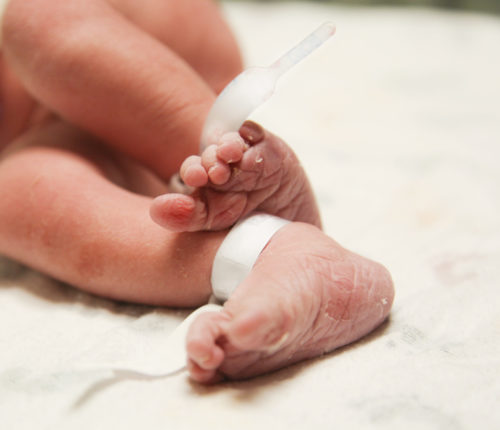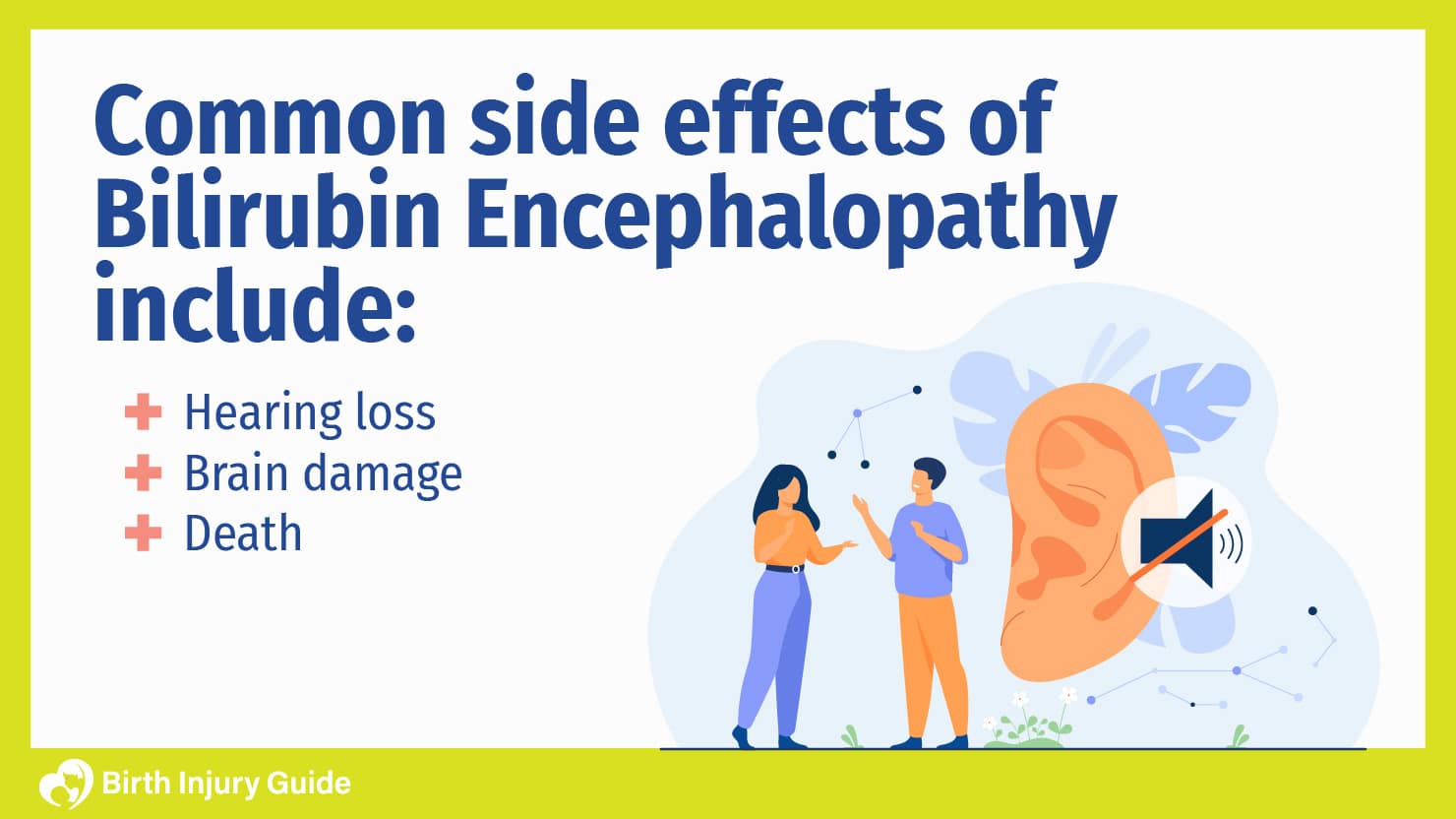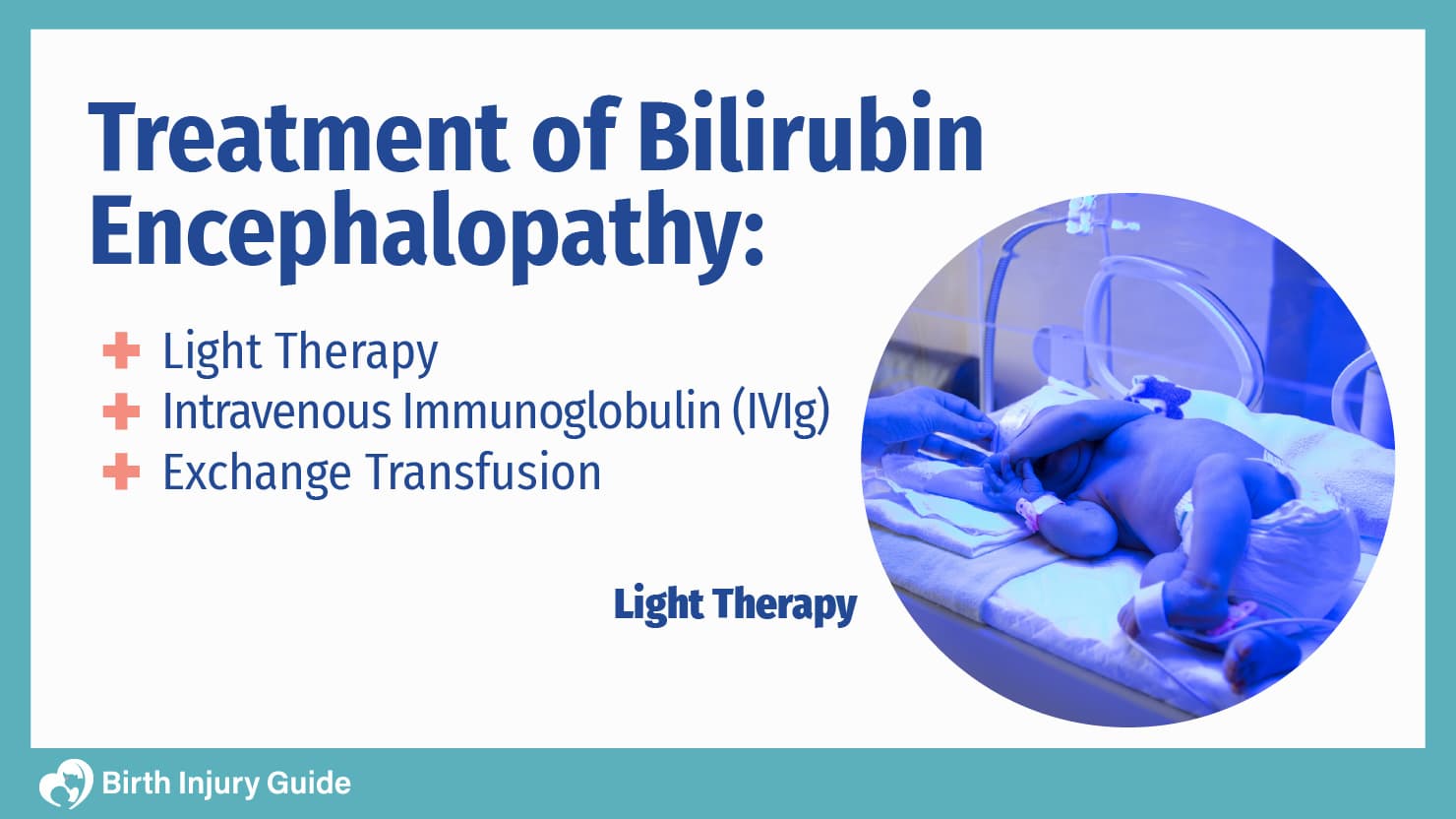
What is Bilirubin Encephalopathy a.k.a. Kernicterus?
Bilirubin encephalopathy (BE), also known as kernicterus or acute bilirubin encephalopathy, is a neurological condition that occurs when an infant has severe jaundice. BE is considered a rare condition, but is nevertheless a concern for parents whose newborn has been diagnosed with neonatal jaundice. Understanding how neonatal jaundice can lead to BE, as well as what symptoms to look for, can help parents address concerns before their baby’s health is compromised.
Terms You Should Know
It can be difficult to understand medical terminology and how it applies to your family. Here are some basic definitions of terms associated with BE that may help you if you are concerned about your child:
- Bilirubin – Bilirubin is a natural substance in the body that is found in bile. Bilirubin forms as a result of the breakdown of red blood cells. It is then processed/eliminated through the liver, and excreted in bile. Bilirubin levels vary, so it is important to talk to your doctor about what is normal for your child, and what tests can be done to assess levels of bilirubin in the blood.
- Jaundice – Jaundice is a condition that most often occurs during the first weeks of life, and is characterized by elevated levels of bilirubin in the bloodstream. Jaundice is most often recognized due to a yellowish coloration of the skin or whites of the eyes. The yellowish tint is due to bilirubin not breaking down properly during breakdown of red blood cells.
- Kernicterus – Kenicterus refers to permanent brain damage caused by BE. Kernicterus is also the medical term for the yellow staining that occurs in the brain due to excessive bilirubin.
Jaundice
Jaundice is a fairly common condition affecting newborns. High levels of bilirubin may cause the skin to look yellow in color due to the body attempting to rid itself of red blood cells. On its own, jaundice is considered a condition with few risks or side effects if treated properly. However, severe cases of jaundice with excessively elevated bilirubin levels can lead to dangerous complications, including neurological conditions like BE. It is really important for parents and healthcare providers to address jaundice immediately and get proper treatment.
When bilirubin levels get very high or the baby’s immune system is compromised due to illness, bilirubin may migrate outside the bloodstream and collect inside brain tissue. This is what leads to BE and can cause long-term complications for the baby. Common side effects of BE include:

BE is most commonly diagnosed in children who have other medical conditions or compromised immune systems. Treatment or prevention of BE will depend on the overall health of the child.
Stages of Bilirubin Encephalopathy
BE is often measured in three stages: Early, middle, and late. These stages are classified by symptoms, such as the following:
- Early Stage – Symptoms may include those related to jaundice, poor sucking or feeding, lethargy (extreme sleepiness), and a lack of startle reflexes.
- Middle Stage – Symptoms may include irritability, high-pitched crying, poor feeding, or hyperextended or arched back, also called hypertonia.
- Late Stage – Symptoms include shrill crying, seizures, muscle rigidity or arched back, coma, or no feeding at all. Late stage BE can be fatal if treatment is not administered in a timely manner, or is unsuccessful.
Treating Infants with BE
Treatment of BE depends on the overall health of your child, as well as the stage of BE at the time of diagnosis. While mild to moderate cases of jaundice most often resolve on their own within a few weeks, severe cases of jaundice or BE often requires more extensive treatments.

The most common treatments for BE include:
- Light Therapy – Light therapy is the most common form of treatment for elevated bilirubin. Many parents find it necessary for their newborn to undergo light therapy at the hospital. Others complete therapy at home in the days following birth. Light therapy works by changing bilirubin molecules so they can be extracted through urine and stool. This therapy is painless for the infant, and requires the baby be placed under special lights while wearing only a diaper and protective eyewear. Light therapy does not use ultraviolet lights, and is safe for your baby.
- Intravenous Immunoglobulin (IVIg) – IVIg is used to treat severe cases of jaundice when the cause is related to differences in blood type between the baby and his or her mother. These differences can cause the baby to carry antibodies from the mother that negatively interact with the baby’s own blood cells. IVIg is a blood protein that reduces these antibodies and helps normalize elevated bilirubin levels.
- Exchange Transfusion – Exchange transfusion is perhaps the most intensive treatment for serious jaundice and BE. This process includes repeated withdrawal of small amounts of the baby’s blood. Next, doctors dilute maternal antibodies and bilirubin, then transfer the blood back to the baby’s system. This process is only done in severe cases and is completed in the Neonatal Intensive Care Unit (NICU).
Is Kernicterus a Birth Injury?
The natural causes of severe jaundice or BE vary depending on the child and his or her overall health. After all, it is natural for the body to break down red blood cells and process waste. There are, however, also causes that are not natural. These factors include healthcare providers failing to recognize jaundice, failing to treat it in a timely manner, or failing to treat it at all. As a parent, you place your trust, and your child’s wellbeing, in the hands of healthcare providers. While it is difficult to imagine, negligent healthcare is a serious problem.
If you are concerned about your child’s health, or have recognized the signs of jaundice or BE, contact your child’s doctor immediately. If you are not satisfied that he or she has addressed the issue, get a second opinion. While your doctor may not be able to prevent conditions like jaundice or BE, he or she has the responsibility to diagnose and treat such conditions in a timely, appropriate manner.
Start Your FREE Case Review Today
If you or your child is injured as a result of medical negligence, call us to learn more.
Getting Help after a Birth Injury
If you or your child has been injured due to a birth injury or negligent care following birth, it is important to protect your health. It is also important to protect your legal rights. To find out more about how to protect your family’s legal rights after a birth injury, please contact us. You can contact Birth Injury Guide by filling out the form on this page and we will respond quickly.



